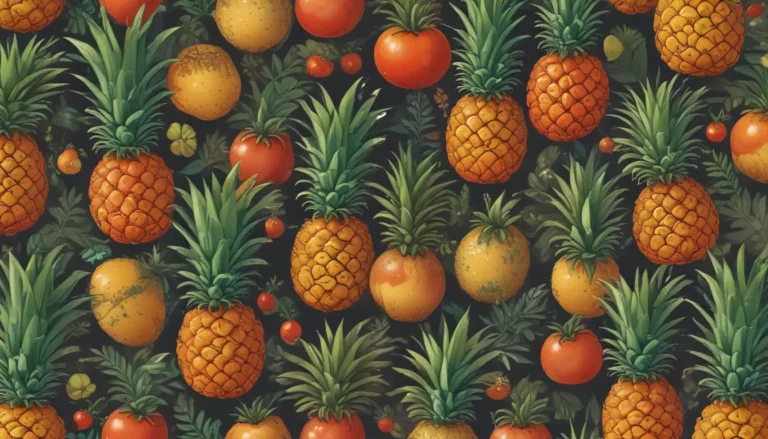Comprehensive Guide to Growing and Caring for Crocosmia Flowers (Coppertips)

Showy and vibrant, fiery Crocosmia flowers are the perfect addition to your late summer garden, adding weeks of blooms in stunning hues of orange, red, scarlet, and yellow. These summer-flowering corms quickly form colorful clumps that attract hummingbirds, butterflies, and other pollinators, while deterring deer and rodents.
Crocosmia, also known as coppertips, falling stars, and montbretia, belong to the iris family, Iridaceae, with eight species native to various regions in Africa. Their star-shaped blooms come in bright colors and are a delightful addition to any garden. Here’s what you’ll learn in this informative guide:
What Is Crocosmia?
Crocosmia is a tough and resilient perennial that thrives in USDA Zones 6 to 9, with some hybrid cultivars like ‘Lucifer’ being hardy down to Zone 5. These corms feature lance-like foliage that forms attractive clumps, and they bloom in their second or third year, eventually multiplying to create vibrant displays in your garden.
The name “crocosmia” originates from Greek words for saffron and smell, as the dried petals release a saffron-like fragrance when dipped in water. While beautiful and easy to grow, certain varieties may be invasive in regions like the UK and New Zealand, so they should be planted with care.
Crocosmia Plant Propagation
You can easily propagate Crocosmia by division or from seeds. When dividing, lift clumps in the spring and gently pull apart the corm strings to separate the new growth. Plant the newest and most vigorous corms for optimal results.
If growing from seeds, collect fresh seeds in autumn and plant them in trays of seed-starting soil. Maintain even moisture and bright, indirect light for successful germination. Once the seedlings have four to six true leaves, you can transplant them to the garden.
How to Grow Crocosmia Flowers
Crocosmia plants prefer fertile, well-draining soil in full to partial sun. Amend the soil with compost or manure, and water regularly to keep the soil moist but not waterlogged. Mulching during dry summers can help retain soil moisture and support healthy growth.
To grow crocosmia flowers successfully, follow these tips:
- Grow in a full to part sun location.
- Amend soil if needed for proper drainage.
- Maintain even moisture in the soil.
Maintenance and Best Uses
After flowering, remove stems by cutting close to the foliage to encourage new growth. You can collect seeds by leaving a few seed heads on the plants. Crocosmia foliage can be allowed to die down naturally to form mulch, or you can trim it back for a neater appearance. Regular fertilization and dividing overcrowded clumps every few years will ensure vibrant growth and abundant flower production.
Crocosmia flowers are versatile and can be used in beds, borders, containers, cut arrangements, and more. Mass planting is recommended for a striking visual impact, and they pair well with dark conifers or walls to make their vibrant colors stand out.
Crocosmia Cultivars to Select
Several popular cultivars of Crocosmia offer a range of colors and sizes to suit your garden needs:
- Emily McKenzie: Features saffron orange flowers with a maroon stripe and golden yellow throats.
- Lucifer: Boasts cardinal red flowers that bloom from midsummer into fall.
- George Davidson: Showcases golden yellow flowers perfect for hot color schemes.
- Orange Pekoe: Offers a tricolor blend of orange, red, and yellow blooms.
- Tai Pan: Displays saturated corn yellow flowers on dense clumps of foliage.
These cultivars are hardy in various USDA Zones and make excellent choices for different garden settings.
Managing Pests and Disease
Crocosmia plants are generally pest-free and disease-resistant but may suffer from red spider mites infestations. Use insecticidal soap or neem oil to address pest issues. Ensure the soil is well-draining to prevent corm rot and avoid overwatering your plants.
Quick Reference Growing Guide
| Plant Type | Flower/Foliage Color | Native to | Maintenance | Hardiness (USDA Zones) | Water Needs | Bloom Time | Soil Type | Exposure | Soil pH |
|————|———————–|———–|————-|———————–|————-|————|———–|———-|———|
| Flowering corm | Orange, red, yellow/green | Africa | Low | 5-9 | Moderate | Midsummer | Fertile | Full sun to part shade | 6.0-8.0 |
Use this guide as a reference to help you grow and care for Crocosmia flowers effectively in your garden.
Long-Lasting Fiery Colors
Crocosmia flowers are an excellent choice for adding vibrant color to your garden. By following the tips and cultivar selections in this guide, you can enjoy weeks of blooms and attract beneficial pollinators to your outdoor space. Mass plant these stunning flowers to create a visually striking display, and be sure to divide and maintain your clumps regularly for continued growth and flower production.
Do you have a favorite Crocosmia cultivar in your garden? Share your experience in the comments below. For more information on growing beautiful flowers, check out our other detailed guides on Gladiolus, Irises, and Crocus flowers.





